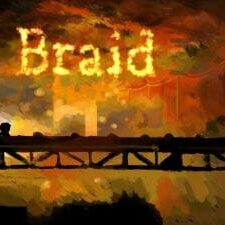
Last week saw the release of “The Witness,” the new game from indie developer Jonathan Blow, which has so far received positive reviews. In commemoration of the occasion, let’s look back at the game which put Blow and his studio on the map in 2008 with its inventive gameplay, interesting story, and beautiful art. Let’s look back to a little game called “Braid.”
“Braid” starts off looking like any simple 2D platformer with gameplay based around running, jumping, and defeating enemies to get to the end of the level, as well as collecting trinkets along the way. However, where “Braid” differs is in its central mechanic of turning back time (similar to “Prince of Persia: Sands of Time”). The seemingly simple mechanic is put to great use due to the games exquisite level design, which encourages experimentation and makes this platformer feel more like a puzzle game. When playing “Braid” there may be some point where you will not know how to proceed, which is both good and bad. The high difficulty can make using a walkthrough seem almost essential for proceeding as many solutions can make you wonder just how you’re supposed to figure it out. Yet when you do figure out the solution on your own, it feels all the more rewarding due to the unorthodox thinking you’ll have to employ in order to solve the puzzle. The mechanics of the game remain fun, but may not be best for someone looking for a relaxing experience to pass the time.
The story of “Braid” is by all accounts just as unorthodox as the gameplay. It starts off looking like the standard “Mario”-esque platformer tale of saving a captured princess, but evolves into something much more. It’s hard to talk about the story without spoiling anything, so I will simply say that the ending will leave you questioning everything that you thought you knew about the game’s story.
One major complaint, however, is in the mode of storytelling. While the text is well written and fairly engaging, it feels like it breaks the action of a game that is supposed to be a platformer instead of fitting in more cohesively with the gameplay. Much of the story is told through long paragraphs of written text before each level, making the gameplay and the story feel distinct from one another. What you do in each level essentially has little to do with the storyline.
I highly recommend “Braid,” if only because there is little else like it in gaming. Its flaws stem mainly from how the gameplay and story feel too separated from one another, but is still enjoyable because of its individual elements.
“Braid” is available on PS3, Xbox 360 and PC.






